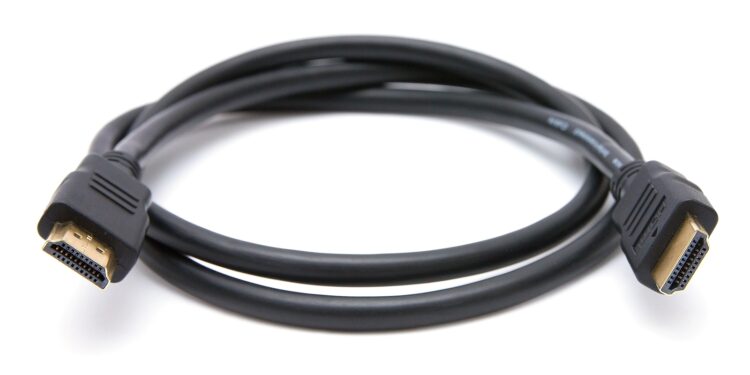HDMI 2.2 is just around the corner and brings with it numerous improvements that will not only make technology fans sit up and take notice. The new protocol promises a drastic reduction in audio latency and a significantly higher bandwidth, which is particularly important for modern devices such as AR and VR systems. But HDMI 2.2 also brings noticeable advantages for everyday use.
HDMI is one of the most important standards in consumer electronics. It enables the transmission of images and sound in the highest quality – from televisions to game consoles and computers. The last major innovation, HDMI 2.1, was eight years ago and brought us support for 4K120 and 8K60 resolutions. With HDMI 2.2, the HDMI forum now a new benchmark that is tailored to the increasing demands of modern technologies such as virtual reality, machine vision and large-scale digital displays. At the same time, problems such as audio latency are to be specifically addressed.
The new HDMI 2.2 in detail
bandwidth of 96 Gbps
One of the biggest advances in HDMI 2.2 is the increased bandwidth. At 96 gigabits per second, the transmission capacity is doubled compared to HDMI 2.1. This massive increase is particularly essential for data-intensive applications such as AR and VR devices. Here, large amounts of data must be processed in real time to ensure a smooth and immersive user experience. But this improvement is also noticeable in areas such as medical imaging or large-scale advertising displays.
Latency Indication Protocol (LIP)
Another highlight of HDMI 2.2 is the new Latency Indication Protocol, or LIP for short. This protocol was specially developed to optimize the synchronization of image and sound. Especially when using audio-video receivers or soundbars, which often cause annoying delays, the audio latency is significantly reduced thanks to LIP. Whether you're gaming, streaming or watching a film - HDMI 2.2 ensures a harmonious interplay of image and sound.
Support for future resolutions and refresh rates
HDMI 2.2 is also ready for the future. In addition to the improved bandwidth and lower latency, the protocol supports higher resolutions and refresh rates. This means that future technologies that enable even more detailed and smoother displays will be easily compatible with HDMI 2.2. For you as a user, this means that you can be sure that your future devices will remain up to date in the years to come.
Why HDMI 2.2 is important
HDMI 2.2 comes at a time when the demands on modern consumer electronics are constantly increasing. The new version of the protocol is not just an upgrade but a response to the challenges of today and tomorrow. HDMI 2.2 will play a key role, especially in the world of virtual reality, which is evolving rapidly. But the technology also brings noticeable improvements to everyday life, particularly by reducing audio latency. However, it will still be a while before the first devices with HDMI 2.2 come onto the market. The HDMI Forum plans to introduce the new standard in the first half of 2025. Until then, HDMI 2.1 will remain the standard that already covers many requirements. Nevertheless, it is worth keeping an eye on HDMI 2.2, because the advantages are promising.
HDMI 2.2 makes entertainment more immersive and powerful
HDMI 2.2 is a step forward for HDMI technology and brings with it numerous improvements that benefit you as a user. From increased bandwidth to reduced audio latency to support for future technologies, the protocol sets new standards. Even though it is still a long way off being widely available, HDMI 2.2 shows where things are headed. The future of consumer electronics will be even more immersive, even more synchronous and even more powerful - and HDMI 2.2 is the key to this. (Photo by JacobXX / Bigstockphoto)





